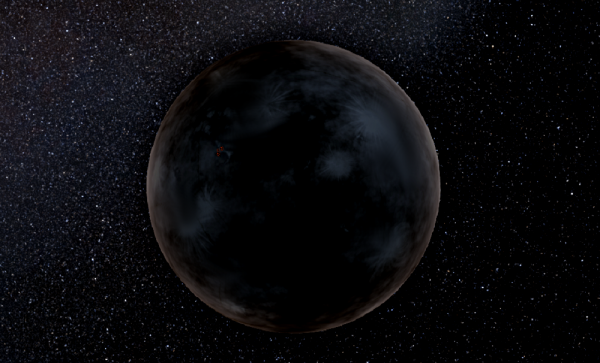Solar System Likely Once Had Another Gas-Giant Planet
To evolve into our current solar system, the original version probably had a fifth gas giant, computer simulations indicate.
Jupiter, Saturn, Uranus and Neptune. Those are the gas giants, the four heavyweights of the solar system. But was there once a fifth?
Maybe so, says a new study by David Nesvorny of the Southwest Research Institute in Boulder, Colorado. He used computer simulations to explore what the solar system may have looked like some four billion years ago.
Early on, the giant planets migrated, tugged on each other and generally shook things up before settling into their current orbits. So the simulation tested different initial arrangements of planets to see which would evolve into the solar system we know so well.
With just four giant planets at the outset, the solar system hardly ever wound up looking like ours. But with a fifth planet, the simulations produced familiar solar systems 10 times more often. [David Nesvorny, "Young Solar System's Fifth Giant Planet?" on arXiv.org]
So what happened to the extra planet? It would have run afoul of Jupiter and been chucked into interstellar space. Astronomers have recently discovered that the galaxy is filled with such orphaned planets. Billions of them. So, if an extra planet did get cast out of the solar system, at least it has plenty of company.
Source (with podcast)
To evolve into our current solar system, the original version probably had a fifth gas giant, computer simulations indicate.
Jupiter, Saturn, Uranus and Neptune. Those are the gas giants, the four heavyweights of the solar system. But was there once a fifth?
Maybe so, says a new study by David Nesvorny of the Southwest Research Institute in Boulder, Colorado. He used computer simulations to explore what the solar system may have looked like some four billion years ago.
Early on, the giant planets migrated, tugged on each other and generally shook things up before settling into their current orbits. So the simulation tested different initial arrangements of planets to see which would evolve into the solar system we know so well.
With just four giant planets at the outset, the solar system hardly ever wound up looking like ours. But with a fifth planet, the simulations produced familiar solar systems 10 times more often. [David Nesvorny, "Young Solar System's Fifth Giant Planet?" on arXiv.org]
So what happened to the extra planet? It would have run afoul of Jupiter and been chucked into interstellar space. Astronomers have recently discovered that the galaxy is filled with such orphaned planets. Billions of them. So, if an extra planet did get cast out of the solar system, at least it has plenty of company.
Source (with podcast)


